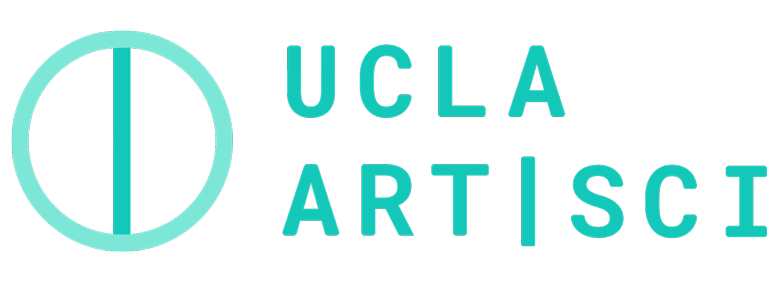New Generation Scientists Speak: Art|Sci Connections + Networks
NEW GENERATION SCIENTISTS SPEAK: SCI|ART CONNECTIONS + NETWORKS
November 3rd, 4:00-6:30pm
School of Creative Media, City University
Future Cinema room, 6th floor
It used to be common for a scientist to be an artist and vice versa. Somewhere
during recent history Two Cultures between the Arts and the Sciences emerged,
making it difficult to cross boundaries, creating the illusion that the gap between
them is unbridgeable. But a new generation of scientists and artists are emerging,
fostering dialog and innovating collaborations, thereby creating a new space where
technology blends with design, where scientific research is coloured with art.
In recent art/science dialogues, we tend to hear about artist’s experiences and
inspirations in relation to these kind of cross‐disciplinary collaborations. This panel
is made up of scientists who are active in their respective fields but also have long
term collaborative relationships with artists. They will discuss, from their point of
view, why it is important to engage these new research territories at this historical
juncture. In relation to this projects that they have been involved with will be shown,
including the current collaborative work on display at upcoming Microwave fectival.
Moderated by an artist, these scientists will discuss our experiences in melding (or
re‐melding) these two worlds – from a nanoscience, neuroscience and
biotechnology perspective merging with that of design media arts. In the process we
hope to engage the audience with thoughts about the future of Sci|Art, the process of
collaboration and how to nurture its growth.
Moderated by Victoria Vesna, Ph.D.
………..
Victoria Vesna
Victoria Vesna, Ph.D., is a media artist and Professor at the UCLA Department of
Design | Media Arts and Director of the Art|Sci center at the School of the Arts and
California Nanosystems Institute (CNSI). She is currently a Visiting Professor at SCM, City University, Hong Kong, Parsons Art, Media + Technology, New York, a senior
researcher at IMéRA – Institut Méditerranéen de Recherches Avancées in Marseille.
Her work can be defined as experimental creative research that resides between
disciplines and technologies. With her installations she explores how
communication technologies affect collective behavior and how perceptions of
identity shift in relation to scientific innovation.
Adam Stieg
Adam Stieg, Ph.D ‐ Director of the Sci | Art NanoLab Summer Institute. Originally
raised in the suburbs of Chicago, Adam received his B.A. from Drew University and
Ph.D. in Physical‐Inorganic Chemistry from UCLA. As Scientific Director of Nano and
Pico Characterization at the California NanoSystems Institute, his research focuses
on the design and application of physical methods toward characterization of
nanoscale systems, ranging from the physical to biological, through the development
of multi‐environment, high‐performance scanning probe microscopes. Numerous
ongoing, collaborative efforts involve the study of molecular machines and devices,
nanoparticles for targeted drug delivery, inorganic carbon‐based materials, and
tailored functional surfaces for stem cell differentiation. Recently established
research directions include the use of engineered, supramolecular protein
assemblies toward the construction of functional meso‐scale devices and the pursuit
of physically derived intelligent systems through neuromorphic computation. His
direct involvement in a variety of collaborative, interdisciplinary research projects
between the arts and sciences has provided both inspiration and motivation for
bringing the power of such creative approaches to the forefront of education.
Siddharth Ramakrishnan
Siddharth Ramakrishnan, PhD. is a Neuroscientist currently working in the field of
Bioelectronics at Columbia University in New York. He works on designing
microchips to record from brain cells and using proteins to create bio‐batteries and
biosensors. As a postdoctoral researcher at UCLA (2006‐2009) he studied the
development and physiology of reproductive neurons in the zebrafish brain. His PhD
dissertation (UIC, 2005) addressed pattern generating networks in snails and how they
were modulated to elicit various behaviors. He co‐teaches the Hybrid
Worlds: Nano_biotech + Art course with Victoria Vesna at the New School of Design, New York. In 2011, he was invited to speak at DASER, at the National Academy of
Sciences in Washington, D.C. His collaborations with artists and architects have led
to exhibitions and documentaries that blend the worlds of art and science. Currently
he has been appointed Fellow of the UCLA Art|Sci center.
Romie Littrell
Romie Littrell’s research is focused on the exchange of tools and methods between
artists and scientists. In the present he is a graduate student in the Biomedical
Engineering Dept. at UCLA. He received his BA in Molecular and Cell Biology from
UC Berkeley. Since then he has engaged in a wide array of biological research
including maize genetics, cornea tissue engineering, microfluidic bioreactors, and
cell‐chip interfaces. His current research focuses on creating non‐institutional
laboratories and abstracting biological techniques to facilitate those in unrelated
fields to perform advanced biology. Romie is also very interested in synthetic
biology, is the founder of SoCal DIYBio, and was a grad advisor to the 2007 MIT
iGEM team.

